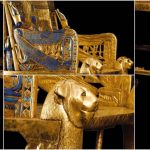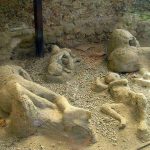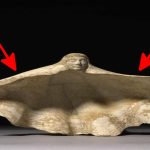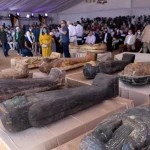Griffin Mosaic at the Rhodes Archaeological Museum, from the Acropolis, c. 2nd century BC

The “Griffin Mosaic from the Acropolis at Rhodes” is a stunning example of ancient craftsmanship and artistic expression, dating back to the 1st half of the 2nd century BC. This exquisite piece, now housed in the Archaeological Museum of Rhodes, provides a fascinating glimpse into the cultural and artistic practices of the Hellenistic period.
The griffin, a mythical creature with the body of a lion and the head and wings of an eagle, has been a potent symbol in various cultures throughout history. In Greek mythology, the griffin was considered a guardian of treasures and divine power, often associated with the gods Apollo and Zeus. The inclusion of a griffin in the mosaic from the Acropolis of Rhodes indicates the significance of this symbol and its resonance with the people of that era.
This mosaic, like many from the Hellenistic period, was likely part of the decorative flooring in a public or private building. Mosaics served not only as artistic expressions but also as indicators of wealth and social status. The intricate design and the quality of materials used in the griffin mosaic suggest that it adorned a prominent space, perhaps a grand hall or a temple, where it could be admired by many.

The craftsmanship of the mosaic is extraordinary. Composed of countless tiny tesserae—small pieces of colored stone, glass, or ceramic—the mosaic creates a vivid and dynamic image. The tesserae are carefully arranged to depict the griffin in lifelike detail, capturing the texture of its feathers and fur, the sharpness of its beak, and the powerful musculature of its lion-like body. The use of shading and perspective adds depth to the image, making the griffin appear almost three-dimensional.
The colors of the mosaic are also noteworthy. The vibrant hues have been remarkably well-preserved, offering a glimpse into the aesthetic preferences of the period. The use of rich blues, deep reds, and bright yellows, contrasted with the natural stone colors, creates a striking visual impact. These colors not only enhance the beauty of the mosaic but also reflect the technical expertise of the artisans who created it.
The griffin mosaic is more than just a decorative piece; it is a window into the cultural and religious life of ancient Rhodes. The Acropolis of Rhodes, where the mosaic was originally located, was a significant center of worship and civic activity. As such, the mosaic would have been part of the broader architectural and artistic program designed to convey the power and sophistication of the city. It likely played a role in religious ceremonies or public gatherings, adding to the grandeur and solemnity of the events.
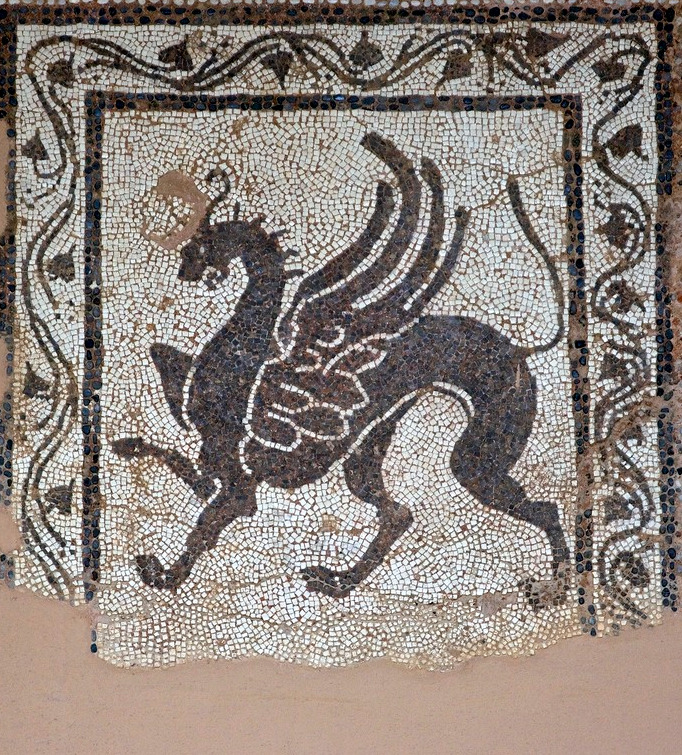
The presence of the griffin also suggests the influence of myth and symbolism in Hellenistic art. Griffins were considered protectors and symbols of divine power, and their depiction in mosaics and other artworks would have conveyed a sense of security and reverence. The mosaic’s location in a prominent public or religious space would have reinforced these associations, reminding viewers of the divine protection over the city and its inhabitants.
Today, the griffin mosaic is a prized piece in the collection of the Archaeological Museum of Rhodes. The museum, which houses a vast array of artifacts from the island’s rich history, provides the perfect setting for the mosaic. Here, it can be appreciated not only for its artistic beauty but also for its historical and cultural significance. Visitors to the museum can marvel at the skill of the ancient artisans and gain a deeper understanding of the role of art in Hellenistic society.
In conclusion, the “Griffin Mosaic from the Acropolis at Rhodes” is a remarkable artifact that encapsulates the artistry, mythology, and cultural richness of the 2nd century BC. Its intricate design and vibrant colors highlight the technical prowess of the period, while its symbolic imagery offers insights into the religious and social life of ancient Rhodes. Preserved and displayed in the Archaeological Museum of Rhodes, this mosaic continues to inspire and educate, connecting us with the artistic and cultural heritage of the ancient world.


